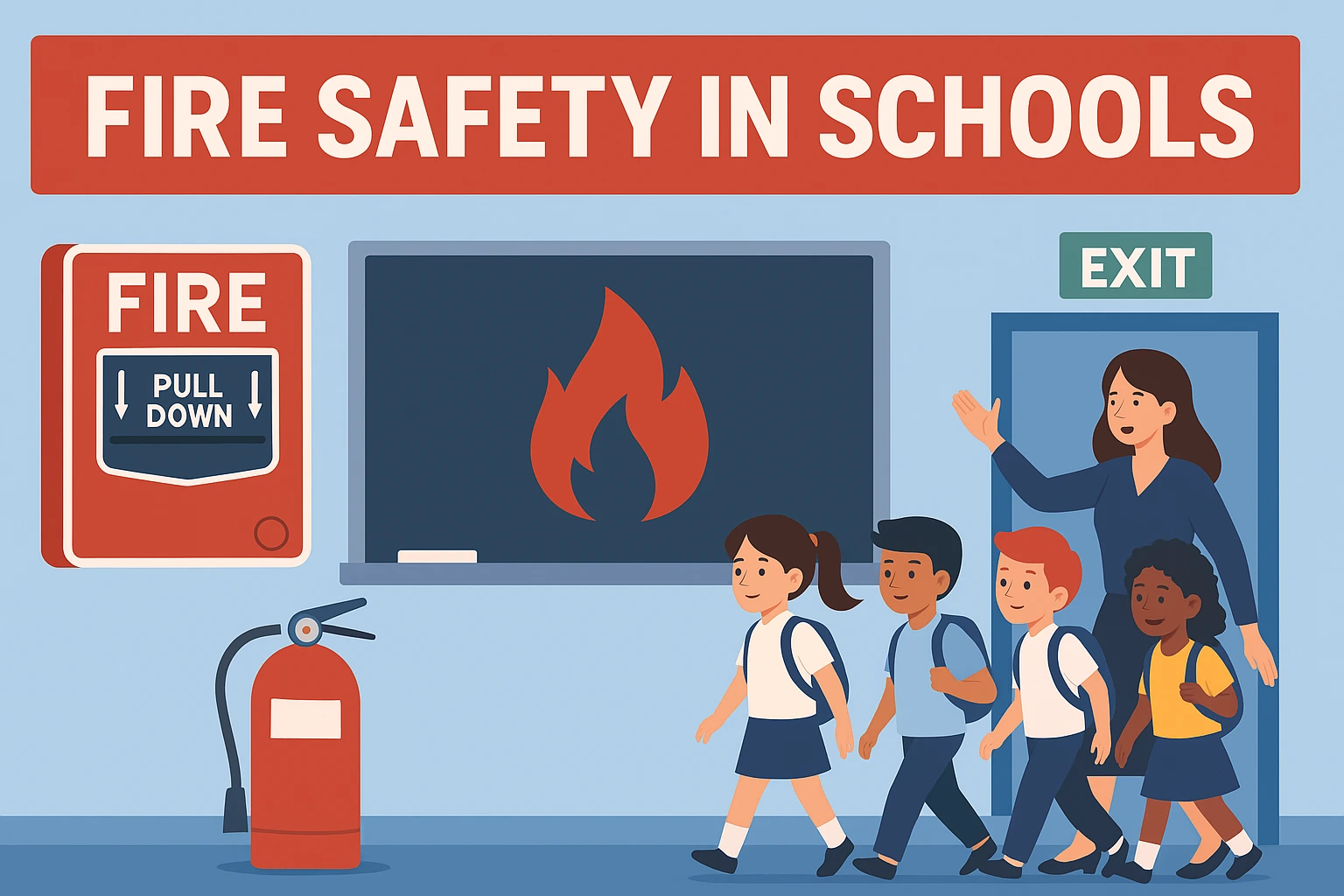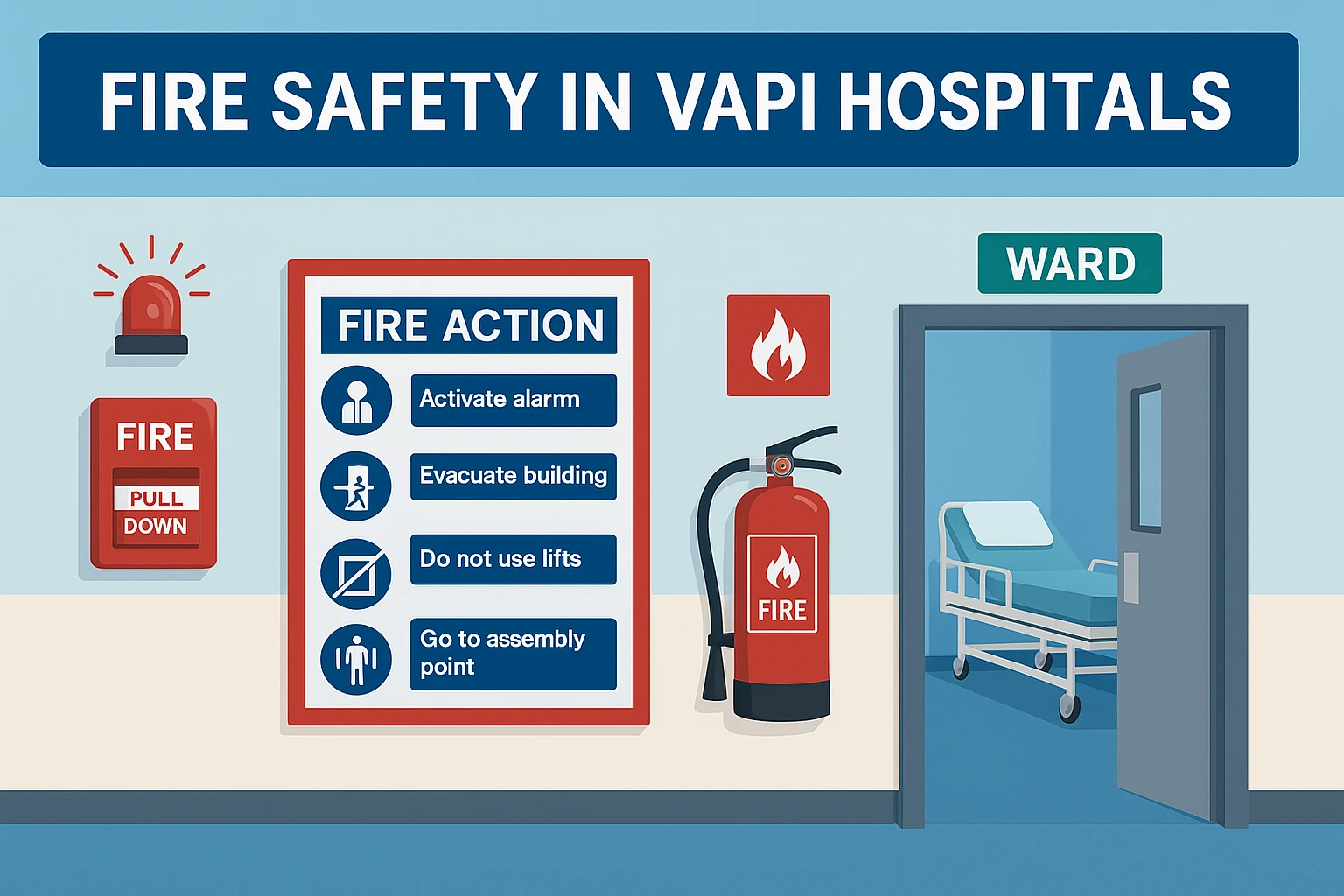Fire Safety Solutions for Server Rooms in Vapi
June 06, 2025

Table of Contents
Comprehensive fire-safety strategies for Vapi server rooms: advanced detection, clean-agent suppression, emergency protocols, and maintenance to safeguard critical data.
Introduction
In Vapi’s dynamic industrial ecosystem, server rooms store invaluable data and power essential operations. A single fire can cripple networks, erase records, and expose sensitive information. This post details the essential fire-safety measures—early detection, specialized suppression, emergency protocols, and ongoing maintenance—that every Vapi facility must implement to protect server rooms, minimize downtime, and ensure business continuity.
1. Advanced Detection & Alarm Systems
Dual-Spectrum Smoke Detectors: Photoelectric + ionization units to catch smoldering hot-spots from overloaded racks or cable insulation.
Spot-Beam Laser Detectors: Extremely sensitive units that detect early particulate changes atop server stacks.
Rate-of-Rise Heat Sensors: Backup detection in areas where airflow or cooling systems may delay smoke accumulation.
Centralized Monitoring: Link alarms directly to your Network Operations Center (NOC) and Vapi Fire Brigade for instant alerts and remote diagnostics.
2. Clean-Agent Suppression Solutions
FM-200 (HFC-227ea) Systems: Fast-acting, no-residue clean agent that extinguishes without harming electronics or leaving conductive deposits.
NOVEC 1230 Systems: Environmentally friendly, zero-ozone-depletion alternative, ideal for high-density racks.
Pre-Engineered Cylinder Banks: Sized to the room’s volume for rapid uniform discharge, calibrated for Vapi’s average ceiling heights.
In-Rack Nozzles & Piping: Direct distribution lines into high-risk rack rows to suppress smoldering before it spreads.
3. Emergency Protocols & Evacuation Planning
Automated Shutdown Sequence: Integrate suppression activation with automatic server shutdown scripts to prevent data corruption.
Access Control Interlocks: Locks disengage upon alarm so engineers can safely re-enter post-discharge, while ensuring no unauthorized entry.
Pressurized Stairwells & Exit Ladders: In multi-floor tech centers, ensure pressurized escapes and clear signage in Gujarati and English.
On-Site Incident Team: Designate IT and facilities staff trained to coordinate with local Vapi Fire Brigade, perform system checks, and assist NOC.
4. Inspection, Testing & Maintenance
Quarterly Detection Tests: Validate smoke and heat sensor sensitivity using calibrated test aerosols and heat sources.
Semiannual Clean-Agent System Inspections: Check cylinder pressures, valve seals, and piping integrity.
Annual Hydraulic Calculations: Update suppression sizing charts if server racks or room layout changes.
Monthly Environmental Monitoring: Log temperature, humidity, and airflow to identify hot spots before they become fire hazards.
Featured Products
Fire Safety Equipment for Vapi Server Rooms
Explore our IS 15683-certified, data-center–grade solutions:
- FM-200 Clean-Agent Cylinder Bank: Custom-engineered for 10 m²–50 m² server rooms.
- High-Sensitivity Spot-Beam Smoke Detector: Detects as little as 0.01 % obscuration per foot.
- Pre-Action Dry-Pipe System: Hybrid backup when clean-agent recharging is in process.
- Rack-Mounted Party-Line Nozzles: Direct agent distribution precisely where servers need it most.
How to Execute a Server-Room Fire Emergency Response in Vapi
1. Monitor & Alert
- Configure NOC dashboards to receive real-time alerts from smoke and heat detectors.
- On alarm, confirm location via spot-beam verification and sound secondary siren.
2. Initiate Server Shutdown
Trigger automated shutdown protocols for all critical racks; pause non-essential processes.
Notify IT staff via encrypted push notifications to stand by for reactivation.
3. Activate Clean-Agent Suppression
Engage the FM-200 or NOVEC 1230 system remotely or via local pull station.
Ensure pre-action valve sequencing to prevent accidental discharge.
4. Evacuate & Secure
- Clear maintenance personnel from the room; lock down access control to prevent re-entry during discharge.
- Direct staff to designated safe zone outside the data center, maintaining communication with Vapi Fire Brigade.
5. Post-Discharge Assessment
After atmospheric safe-level confirmation, IT and facilities teams inspect for damage.
Document incident details, suppression volume used, and any system malfunctions.
6. Recovery & Recommissioning
Replace any triggered suppression cylinders or refill agents; recalibrate detectors.
Perform test boot on all servers; verify data integrity with backup logs.
Submit a compliance report to local authorities and corporate HQ.
commonly asked questions
Why choose clean-agent suppression over traditional sprinklers in server rooms?
Clean agents like FM-200 and NOVEC 1230 extinguish without water, preventing irreversible damage to electronics and minimizing downtime.
How often should server-room fire systems be tested?
Perform detection tests quarterly and clean-agent inspections every six months; re-certify annually to comply with Gujarat fire-safety codes.
Can suppression activation cause data loss?
Integration with automated shutdown scripts ensures servers initiate controlled shutdown moments before agent discharge, preventing data corruption.
Who certifies server-room fire-safety installations in Vapi?
An ISI-certified vendor such as Us Munshi Fire Safety, conducts full-system audits and issues compliance certificates.
Admin
Fire Safety Expert
Stay Updated
Get the latest fire safety tips and news delivered to your inbox.


